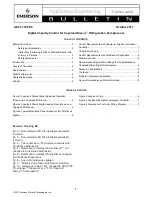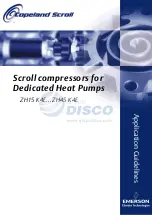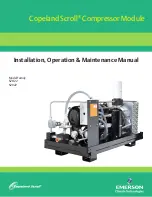
17
English
BEFORE EACH START-UP
1. Every day check the sight glass to ensure that the level of
oil in the pump is at the required level.
2. Place Auto/Off switch to "OFF (0)".
3. Close the drain valve.
4. Visually inspect air lines and fittings for leaks.
5. Check safety valve. See Check Safety Valve under
Maintenance, page 20.
6. Attach hose and accessories.
WARNING: Risk of unsafe operation. Firmly grasp air hose in hand when
installing or disconnecting to prevent hose whip.
WARNING: Risk of unsafe operation. Do not use damaged or worn
accessories.
NOTICE: The hose or accessory will require a quick connect
plug if the air outlet is equipped with a quick connect socket.
NOTICE: A regulator MUST be used if the air pressure required
for the accessory is less than the maximum air pressure supplied
from the air compressor.
WARNING: Risk of bursting. Too much air pressure causes a hazardous
risk of bursting. Check the manufacturer’s maximum pressure rating for
air tools and accessories. The regulator outlet pressure must never exceed
the maximum pressure rating.
CAUTION: Risk of unsafe operation. Compressed air from the unit may
contain water condensation and oil mist. Do not spray unfiltered air at an
item that could be damaged by moisture. Some air tools and accessories
may require filtered air. Read the instructions for the air tools and
accessories.
HOW TO START
1. Turn the Auto/Off switch to "AUTO (1)" and allow tank pres-
sure to build. Motor will stop when tank pressure reaches
"cut-out" pressure.
2. When the tank pressure reaches "cut-out" pressure open
the air discharge valve.
NOTICE: When using a regulator and other accessories refer to
the manufacturer’s instructions.
WARNING: Risk of bursting. If any unusual noise or vibration is noticed,
stop the air compressor immediately and have it checked by a trained
service technician.
The air compressor is ready for use.
SHUT-DOWN (Fig 5)
1. Move Auto/Off switch to the OFF (0) position.
NOTICE: When finished using air compressor, follow
Steps 2 - 5.
2. Drain the tank, see Draining Tank under
Maintenance, page 20. Ensure tank pressure gauge
reads 0 PSI (0 kPa).
















































